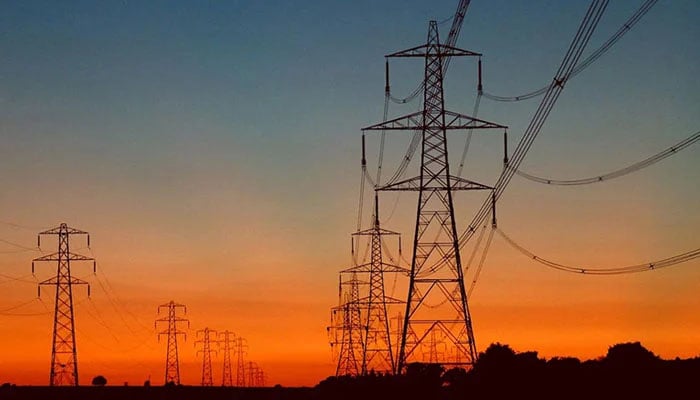PTI govt preferred costly power generation over cheaper renewable energy
According to the official data, PTI government generated 28 billion units of electricity since 2019 at the cost of Rs30 per unit
ISLAMABAD: The top management of the coalition government in the Power Division has detected a scam of multi-billion rupees on how the countrymen were deprived of cheaper electricity of 3 cents per unit (Rs7 per unit) by the PTI government because of their indecisiveness and ‘questionable strategy’ it adopted to run the power plants based on furnace oil apparently to appease the furnace oil mafia.
According to the official data, the PTI government generated 28 billion units of electricity since 2019 from power plants based on residual furnace oil at the cost of Rs30 per unit. This means that the total cost incurred on electricity generated from furnace oil stands at Rs840 billion.
In its place, if the renewable projects pending since 2018 had been completed and commissioned at a fast pace, the cost of electricity generation of the new renewable project would have been at Rs196 billion at Rs7 per unit. And this is how electricity end consumers were forced to pay an additional amount of Rs644 billion to the furnace oil lobby. “This has also caused a huge surge in the circular debt,” the official said. “Federal Minister for Power Division Khurum Dastgir Khan has launched a probe into the matter.”
However, when The News contacted Hammad Azhar, who was the federal minister for Power Division, he said renewable projects were shelved during PML-N time itself and furthermore they did not fulfil the criteria laid down in the Indicative Generation Capacity Expansion Plan (IGCEP) 2021-30. This platform opens the projects when their need arises based on competitive bidding. Azhar also argued that even today, excess capacity is installed based on ‘take or pay’ contracts signed by the PML-N government. “They are keeping them shut but still paying capacity charges of hundreds of billions per annum. If new renewable projects are added, the government needs to decide whom to pass on these capacity charges to?”
Rejecting the PTI’s position, a senior official said that these projects were never shelved by the government, as they were given LOI (letter of Intent) and LOS (letter of support), and some of them have acquired the land too and managed to get their cheaper tariffs from NEPRA. He also clarified that the government will install all renewable projects based on ‘take and pay’ mode and this is how there will be no increase in capacity payments.
And as far as the excess capacity of the electricity generation is concerned, the de-rated capacity of the country stands at 24,000 MW. And even if the argument of excess capacity in electricity generation is accepted for a minute, then why did the PTI government ran the old furnace oil power plants? Data shows the reliance on electricity generation increased up to 9 percent in 2020, which was zero during the last year of the PML-N government. Later, it further went up to 11 percent in 2021-22. This means there is no excess capacity in electricity generation. The official said that Indicative Generation Capacity Expansion Plan (IGCEP) 2021-30 is a controversial plan that was finalised by the PTI government in 2020.
He said that the Sindh government time and again raised the lack of inclusion of solar and wind projects in the plan with the-then PTI government. The Sindh government also raised objections on the NEPRA platform too. In the IGCEP plan, the PTI government also excluded those projects pending since 2018 knowing the fact that they were launched under old renewable policy and were allocated land and tariff by NEPRA. The official said that the government has now decided to review the IGCEP plan criteria and would include all renewable projects pending since 2018. He said with the increasing population increase and consequent rise in electricity demand, the maximum demand for electricity during peak time recorded on June 30, 2022, stands at 30,000 MW. So there is a need to add more electricity generation to the system and this fact belies the claims of PTI minister that the country has excess electricity.
According to the official document also available with The News, NEPRA in September 2021 also observed that the Authority granted generation licenses and determined tariffs for 14 different projects, of hydro, wind, and solar to the tune of 820.40 MW, which have not been considered in the revised IGCEP. These include 5 projects of wind with a cumulative capacity of 274.40 MW, 7 projects of solar with a capacity of 341.40 MW, and 2 projects of hydro with a capacity of 204.30 MW.
In this regard, the Authority considers that it determined the tariff for wind projects located in Sindh in the range of 3.12 cents per unit, which is the lowest in Pakistan history. The solar project in KPK had also a tariff of 3.95 cents, which is also a competitive tariff considering the fact the province is lower in radiation due to location as compared to Sindh, Punjab, and Balochistan.
“Just in the last fiscal year 2021-22, he said, the government produced 11 percent costly electricity at Rs31 per unit through power plants based on furnace oil. Had the PTI government completed the 6,600MW renewable projects pending since 2018, the electricity power mix outlook would have been favorable in terms of lower tariffs, but the former government didn’t pay heed to complete the projects,” the official said. The official said that if the 6600MW renewable projects with a tariff at 3.5 cents would have been added into the system, then the cheaper renewable energy of 2400-2500MW would be available 24/7 in case the plant factor is at 35 percent.
To a question, he said that all the projects would now be completed and commissioned by the sitting government before the next summer season. However, there are some projects that will come on stream in the next 6-8 months. Mustafa Abdullah, VP of the Pakistan Foreign Renewable Energy Investors Forum and CEO of Moro Wind Power Co. of 25 MW said that foreign investors, including Chinese, Kuwaiti and German companies initiated 13 projects of 660 MW (wind and solar) and got tariffs at 3.5 cents per units (8per units) in 2020 from NEPRA, but the PTI government did not notify the tariff which is why the 13 projects could not be completed and commissioned. Abdullah claimed that he kept meeting federal Ministers for Power Division and Planning and Special Initiatives Mr Azhar Hammad and Asad Umar who was also chairman of the cabinet committee on energy, but they would respond by saying that country has already excess electricity and there is no need for these projects. He said that all these projects are foreign-funded and the foreign companies have invested about $20 million. He said foreign companies acquired the land for their projects and obtained the tariffs, but they could not proceed on their projects despite $450 million investment of as the PTI government didn’t notify the tariffs in the official gazette. Abdullah also claims meeting the PTI Prime Minister Imran Khan who promised to do something but nothing had happened.
He said the 13 renewable projects not permitted by the PTI government include NORINCO Int’l Thatta Power (100 MWs wind power plant) in Sindh province, sponsored by NORINCO International. The P&G Energy, sponsored by Germany-based ib Vogt GmbH, has obtained a license for a 62.2 MWs solar power plant in Gwadar. Also, the Kuwait-based Enertech has obtained a license for a 50 MWs solar power plant in Bostan, Balochistan province. Other projects include the Iran-Pak wind power plant (50 MWs), Sino Well (50 MWs), Shafi Wind (50 MWs), Javed Solar (50 MWs), Kulachi Solar (50 MWs) and Moro Power (25 MWs). “India has now 45000 MW wind & 100000 MW solar project in operation. However, Pakistan has just 1,500 Wind &500 MW grid solar project in operation only.”
According to the official the top management of AEDB and CPPA (Central Power Purchase Agency) may face the music once the probe into multi-billions of rupees scam is finished. The top functionaries of both AEDB and CPPA are quite upset over the probe. They are trying to influence the minister to bury the issue arguing the renewable projects pending since 2018 were not completed because of some legal issues. However, the incumbent management of the Power Division is not inclined to subscribe to their version and the minister in letter to AEDB and CPPA on August 3, sought responses to 18 questions within three days.
-
 Alexander Skarsgard Breaks Silence On Rumors He Is Bisexual
Alexander Skarsgard Breaks Silence On Rumors He Is Bisexual -
 King Charles Faces Rift With Prince William Over Prince Harry’s Invictus Games
King Charles Faces Rift With Prince William Over Prince Harry’s Invictus Games -
 Elon Musk’s Critique On ChatGPT Safety Draws Sharp Response From Sam Altman
Elon Musk’s Critique On ChatGPT Safety Draws Sharp Response From Sam Altman -
 Katherine Ryan Takes Aim At Brooklyn Beckham In Fierce Defense Of His Parents
Katherine Ryan Takes Aim At Brooklyn Beckham In Fierce Defense Of His Parents -
 How Timothy Busfield, Melissa Gilbert Really Feel After Release From Jail
How Timothy Busfield, Melissa Gilbert Really Feel After Release From Jail -
 OpenAI, Bill Gates Launch ‘Horizon 1000’ To Transform AI Healthcare In Africa
OpenAI, Bill Gates Launch ‘Horizon 1000’ To Transform AI Healthcare In Africa -
 Prince Harry Receives Praises For Exposing Dark Side Of British Tabloids
Prince Harry Receives Praises For Exposing Dark Side Of British Tabloids -
 Andrew Forces Beatrice, Eugenie To Lose $60 Million Safety Net Saved For Retirement
Andrew Forces Beatrice, Eugenie To Lose $60 Million Safety Net Saved For Retirement -
 Nvidia CEO Jensen Huang To Visit China To Push Re-entry Into AI Chip Market
Nvidia CEO Jensen Huang To Visit China To Push Re-entry Into AI Chip Market -
 U.S. On Verge Of Losing Measles-free Title Due To Outbreak
U.S. On Verge Of Losing Measles-free Title Due To Outbreak -
 Harry Styles Excites Fans As He Announces Release Date Of New Song
Harry Styles Excites Fans As He Announces Release Date Of New Song -
 Japan’s Ex-PM Shinzo Abe’s Killer Is Set To Be Sentenced: How Much Punishment Could He Face?
Japan’s Ex-PM Shinzo Abe’s Killer Is Set To Be Sentenced: How Much Punishment Could He Face? -
 Prince Harry, Meghan Markle’s Return To UK Could Create Royal Family Dilemma
Prince Harry, Meghan Markle’s Return To UK Could Create Royal Family Dilemma -
 Prince Harry Turns Troubled With No Sense Of Home: ‘Isolation Is Getting To Him Mentally’
Prince Harry Turns Troubled With No Sense Of Home: ‘Isolation Is Getting To Him Mentally’ -
 Vitamin D Link To Respiratory Diseases Will Shock You
Vitamin D Link To Respiratory Diseases Will Shock You -
 A$AP Rocky Gives His Take On Children's Budding Personalities
A$AP Rocky Gives His Take On Children's Budding Personalities




